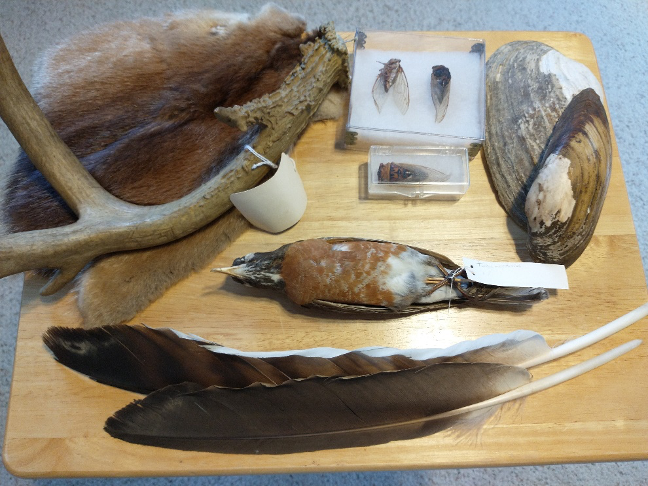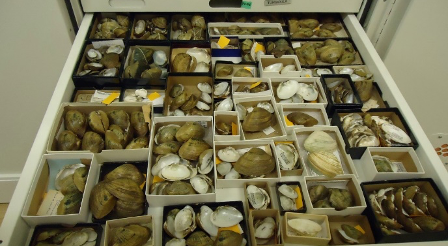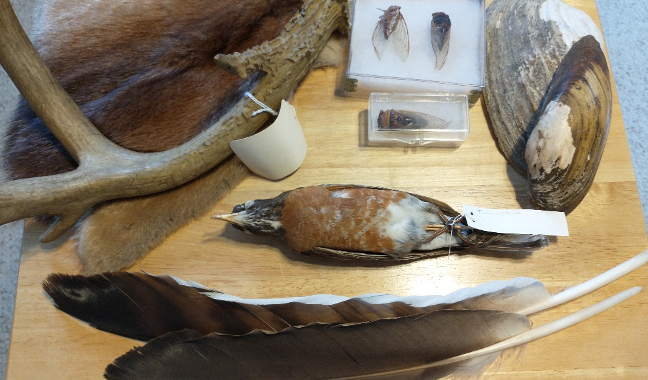
CMC Blog
Zoology CSI
By: Heather Farrington, Curator of Zoology

Even at the dawn of the genetic age, it was known that only living (or once living) cells could be a source of DNA for study. Blood, tissues such as skin and muscle, and reproductive cells such as sperm were standard sources of genetic material. Structures such as fur, hair, feathers, shells, claws, and nails were thought to be made up only of secreted proteins, with no living cells, and therefore were of little value to geneticists unless there were still skin cells attached. If you’ve ever seen a TV crime drama, this is why hair samples are always collected by pulling rather than cutting, so that the skin cells at the base of the hair follicle (living cells containing DNA) are attached.
After a cell dies, the DNA inside begins to degrade, or break down into smaller and smaller fragments, resulting in low quantity and quality of genetic material for analysis. Researchers in the field of “ancient DNA” developed protocols for retrieving DNA from the long dead skin tissue of museum specimens. As genetic technology advanced, researchers around the world began to examine ancient specimens – mummies, mammoths, ancient humans like Neanderthal, animal skins from museum collections, and more – to answer critical questions about DNA from dead tissue. How long after death can DNA in cells be detected? How complete and accurate is the genetic information from these sources? How little DNA you can start with to generate meaningful data? These ancient DNA studies inspired scientists to revisit the possibility of using previously ignored potential sources of genetic material.

By using these ancient DNA laboratory methods, researchers have recently found that some epithelial (skin) cells are imbedded in the protein matrix of hair, feathers, nails, and other structures, as they grow out from the body. However, the concentration of cells (and, therefore, DNA) in these tissues is so low that early studies were unable to effectively use this DNA. However, we now have lab technologies that are so sensitive they can amplify (make copies of) and sequence a single strand of DNA, so we are able to use DNA from tissues we couldn’t before. Although working with samples like these is not ideal, in some situations these are the only types of tissue available for analysis.
Why would researchers ever need to work with these less than ideal samples? A great example is wildlife forensics. Professionals in this field are often called upon to identify and determine the origins of poached and illegally-traded wildlife products. In many cases, only parts of animals are found – ground up rhino horn used in traditional Chinese medicine or bird feathers used in clothing and crafts are often sited examples. Wildlife forensic researchers are tasked with identifying the species and geographic origins of animal products to determine if the animals were illegally harvested.
I had the privilege of visiting the U.S. National Fish and Wildlife Forensics Laboratory in Ashland, OR in 2011. It is an amazing place that plays a critical role in the protection of wildlife around the world. For more information on the topic of wildlife forensics, visit their website at https://www.fws.gov/lab/index.php.
Museum Admission
Includes Cincinnati History Museum, Museum of Natural History & Science and The Children's Museum
| Adult: | $22.50 |
| Senior: | $15.50 |
| Child: | $15.50 |
| Member Adult: |
FREE |
| Member Child: |
FREE |
Members receive discounts!
Become a Member today to save on programs, exhibits and films throughout CMC.
Museum Hours
Open Thursday – Monday
10 a.m. to 5 p.m.
Closed Tuesday and Wednesday
Closed Thanksgiving Day and Christmas Day
Member’s-only early entry: Saturdays at 9 a.m.
Customer Service Hours:
Monday – Sunday, 9 a.m. to 5 p.m.

